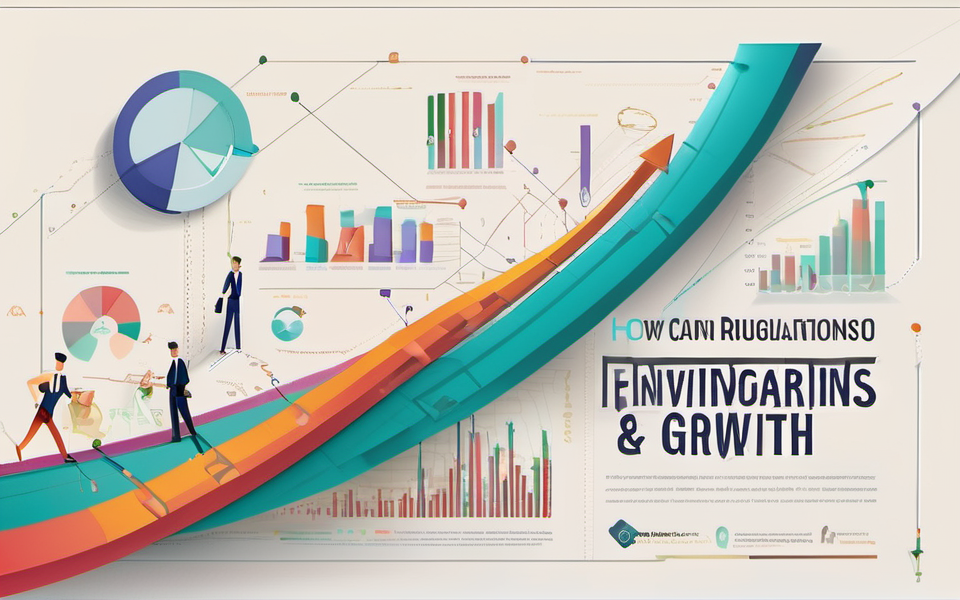You Won’t Believe How Regulations Can Actually Boost Your Business!
Imagine a world where red tape isn’t your enemy, but your secret weapon. Where regulations, instead of stifling your entrepreneurial spirit, catalyze innovation and push you to achieve groundbreaking heights. This isn’t a utopian fantasy. It’s the reality that forward-thinking businesses are embracing, tapping into the untapped potential of regulation to propel them forward in dynamic markets.
Regulations as a Catalyst for Innovation
You might be thinking, “Wait, regulations are meant to restrict, not empower!” And that’s where the common misconception lies. While rigid and outdated regulations can indeed be a barrier to growth, well-crafted and flexible regulations can act as powerful catalysts for innovation. Let’s break it down:
1. Setting Clear Expectations and Leveling the Playing Field
Strong regulations provide clear expectations and boundaries, creating a predictable and stable market environment. Imagine if every business could play by its own rules – it would be utter chaos! Regulations establish fair competition by defining standards for product quality and consumer protection, leveling the playing field and fostering trust among businesses and consumers alike. This predictability fosters stability and confidence in the market, attracting investors and incentivizing long-term strategic planning, all vital ingredients for sustainable business growth.
2. Incentivizing Investment in Cutting-Edge Technologies and Practices
Regulations can serve as a powerful driver of investment in new technologies and environmentally friendly practices. For example, regulations requiring companies to meet specific energy efficiency standards can drive innovation in developing green technologies, boosting the development of solar panels and wind turbines. This is particularly critical in the face of increasing climate change concerns and a global shift towards sustainable development. Regulations act as a powerful lever, encouraging companies to prioritize and invest in developing eco-friendly solutions, ultimately propelling the entire industry towards a greener future.
3. Fostering a Culture of Collaboration and Knowledge Sharing
Dynamic markets demand constant adaptation and evolution. Regulations, by establishing common standards and requirements, create a shared language and framework for industry collaboration and knowledge sharing. Imagine a world where each company develops its own unique product safety standards – utter confusion and unnecessary costs would be the result! Regulations foster a collaborative environment, encouraging the development of best practices and sharing of valuable industry expertise.
Examples of Regulations Driving Growth
It’s not just theory. Real-world examples abound where regulations have ignited remarkable innovation and growth:
1. The US Clean Air Act of 1970: This landmark legislation imposed strict standards on air pollution emissions, spurring the development of emission control technologies and paving the way for the thriving alternative energy industry today.
2. The European Union’s General Data Protection Regulation (GDPR): This robust data privacy framework has been instrumental in promoting trust and confidence in online businesses, leading to the development of new technologies and security protocols, ultimately strengthening the digital economy.
3. The US Food and Drug Administration (FDA): Strict regulations imposed by the FDA on food and pharmaceutical industries have been paramount in ensuring product safety, enhancing consumer trust and bolstering international confidence in American manufactured goods.
4. The California Vehicle Emissions Standards: This pioneering initiative by the State of California forced car manufacturers to invest heavily in fuel-efficient vehicle technologies, paving the way for the global shift towards electric vehicles and a future powered by renewable energy.
Key Takeaways for Success
- Embracing Flexibility: Successful businesses in dynamic markets recognize the need for adaptable, future-proof regulations that can evolve alongside their needs and the ever-changing landscape of the industry.
- Partnering with Regulators: Engage with policymakers and regulators to co-create regulations that are practical, forward-thinking, and beneficial for both your business and society as a whole.
- Harnessing Innovation: Embrace regulatory challenges as opportunities to innovate, develop new solutions, and stay ahead of the curve in a constantly evolving market.
In conclusion, the power of regulation in driving innovation and growth is undeniable. It’s time to shift our perspective, recognizing the immense potential that well-designed and flexible regulations hold for businesses and industries across the globe. By actively embracing regulation as a force for good, we can unlock a world of possibility, unleashing a wave of unprecedented innovation and progress.




